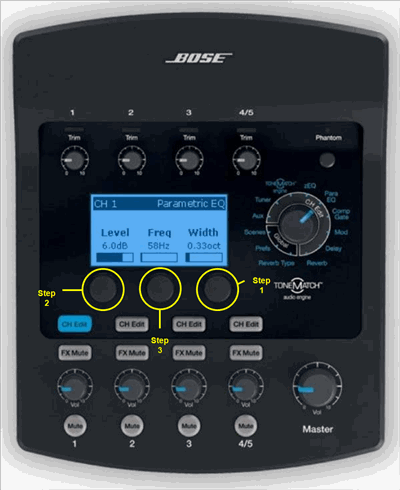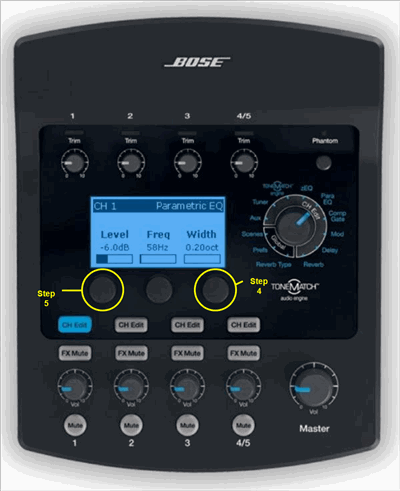Difference between revisions of "Parametric EQ / Solving Problems"
m |
|||
| Line 62: | Line 62: | ||
---- | ---- | ||
<references /> | <references /> | ||
| + | ---- | ||
| + | [[Category:Para EQ]] | ||
[[Category:T1]] | [[Category:T1]] | ||
Revision as of 16:35, 4 April 2008
Troubleshooting with the T1 ToneMatch Audio Engine Parametric EQ
Using Para EQ to solve a problem frequency
In this example a Bassist was having a problem with a resonant note (B flat).
Chuck-at-Bose provided this approach.[1]
|
|
|
4. Adjust the Width control to as narrow a value as possible, so that only the problem is being affected, leaving the non-offending frequencies around it unchanged. The T1 goes down to one fifth (0.20) of an octave, which is great for 'notching out' problem notes. |
Another Approach
Hilmar-at-Bose had a different approach[2]
Here is one method to eliminate a boomy note
a) set the level of the para EQ to a cut, say -10 dB
b) set the width to fairly narrow, say .25 octaves
c) start with a rough estimate of the offending frequency and then move the frequency around until the offending note gets tamed best
d) you can press on the level control to toggle between on and off which gives you a direct A/B so you can judge the effect better
Once you have centered on the frequency you adjust the level and width to taste.
Estimating the frequency:
- Low octave of the bass is from 40 Hz to 80 Hz (E1 to E2), A1 is at 55 Hz
- Low octave on the guitar is from 80 Hz to 160 Hz (E2 to E3), A2 is at 110 Hz
- 2nd octave on the guitar is from 160 Hz to 320 Hz (E3 to E4), A3 is at 220 Hz
Here is a cheat sheet http://www.phy.mtu.edu/~suits/notefreqs.html
Hope that helps
Hilmar
Controlling Feedback
Feedback/T1 ToneMatch™ Audio Engine

